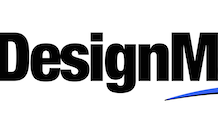Robert Seay, Vice President of Digital Print Strategy and Growth, Georgia-Pacific, and writing for drupa, said that digital print has been promising broad transformation in corrugated for a long time. Significant progress has been made, but digital print today still only represents and addresses a small subset of corrugated print needs.
Digital print transformation in the corrugated industry has been a promise waiting to happen for many, many years. Part of the reason for the delay could be the industry has been perceived as having one monolithic set of needs and digital print has been promoted as one generic solution to fit all of those needs. However, all corrugated needs and digital print solutions are not the same.
The reality is much more nuanced. Indeed, there has been some progress in several use cases and sub-markets including high quality graphics, samples, mock-ups, displays, short-run, large format, double-sided print, and supply chain efficiency including turn-around time, but there are still a few other use cases like personalisation and variable data that haven’t yielded transformation. Regardless, digital print still only addresses a fraction of the overall market for printed corrugated packaging. For this to change, we must ask ‘why’ and eventually address the many gaps that exist today with the overall solution set.
As suggested, the various digital print capabilities are nuanced. Digital print solutions generally do not adequately address all substrate, board combinations, and form factors. Special requirements of the printed product like ink holdout, colour, overprint varnish, coefficient of friction, durability and gluability all play a part in what can or cannot be done by any given digital print solution. Specific press limitations might mean something can be done in limited quantities or certain situations but cannot be done at scale and remain cost effective.
Digital print was and still is supposed to simplify, streamline and accelerate the overall graphics, print process, and product development for the corrugated industry. Digital print in corrugated has been most successful in areas in need of disruption including samples, mock-ups, displays, and ultra short runs. However, to get at the bulk of the market, digital needs to contend with what analogue printing does well day-in and day-out.
It has been incrementally fine-tuned to provide the quality, productivity, reliability, equipment life expectancy, and cost structure that the market recognises today. Different production workflows have evolved to meet various product requirements with different levels of efficiency. Digital print must do something better or different to provide more value than analogue.
Finally, digital printing must consider the macro trends and what the needs of tomorrow will be. These macro trend requirements include fast turnaround, short run lengths – for many different reasons – supply chain efficiency, e-commerce, lightweighting, sustainability and automation that could make digital solutions more compelling in the future.
The predominant issue with digital print is the production costs for a given run length compared to the analogue alternative. For digital to win more broadly, it must look beyond just consumable cost and look at reducing overall value chain costs including running costs, maintenance, capital, useful life, and any other steps or parts that can be streamlined.
Digital print, in general, has a big problem with amortisation of the overall solutions supporting capital and infrastructure required. Certainly, for parts of the market already identified, digital print can work and add value. However, to get at the larger volume of work, digital must either add new value and/or improve cost structure to compete with optimised analogue processes.
It is encouraging to see there is a next generation of solutions being developed that will hopefully help make some of the necessary improvements to expand the segments of the market where digital can add value. With these solutions, they are addressing the broader value chain, reducing steps, and improving overall economics rather than just addressing print.
For those of us who have been championing digital print and what is possible to transform the corrugated industry, the pace of progress is both encouraging and disappointing. There are pockets of great success, but there is also a lot of work to do to get us to the full transformation that all members of the value chain need. These improvements and new solutions cannot get here fast enough. It will be exciting to see what is announced and shown at drupa 2024 to further drive the industry’s digital transformation.
DRUPA
https://www.drupa.com/en





















